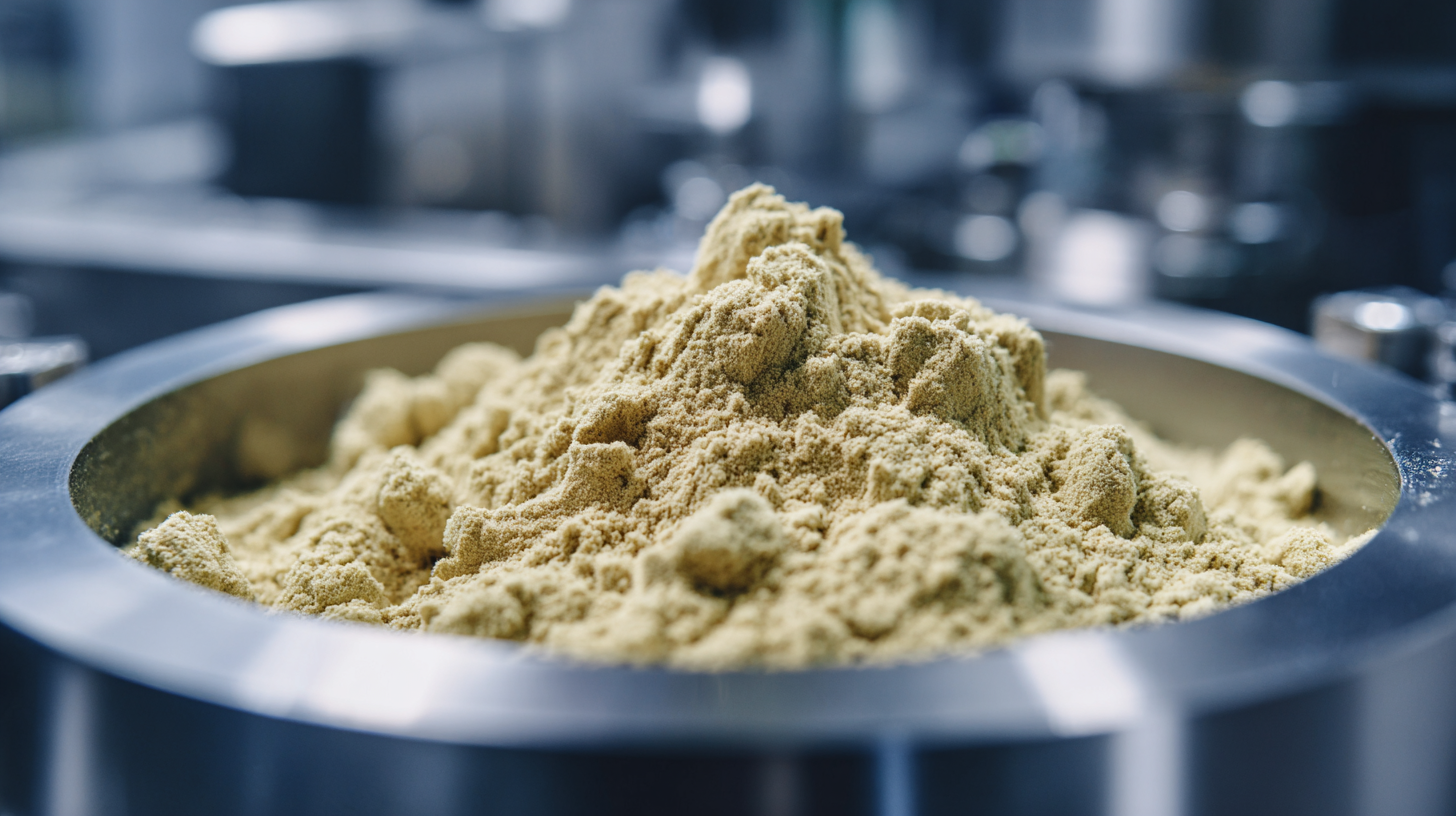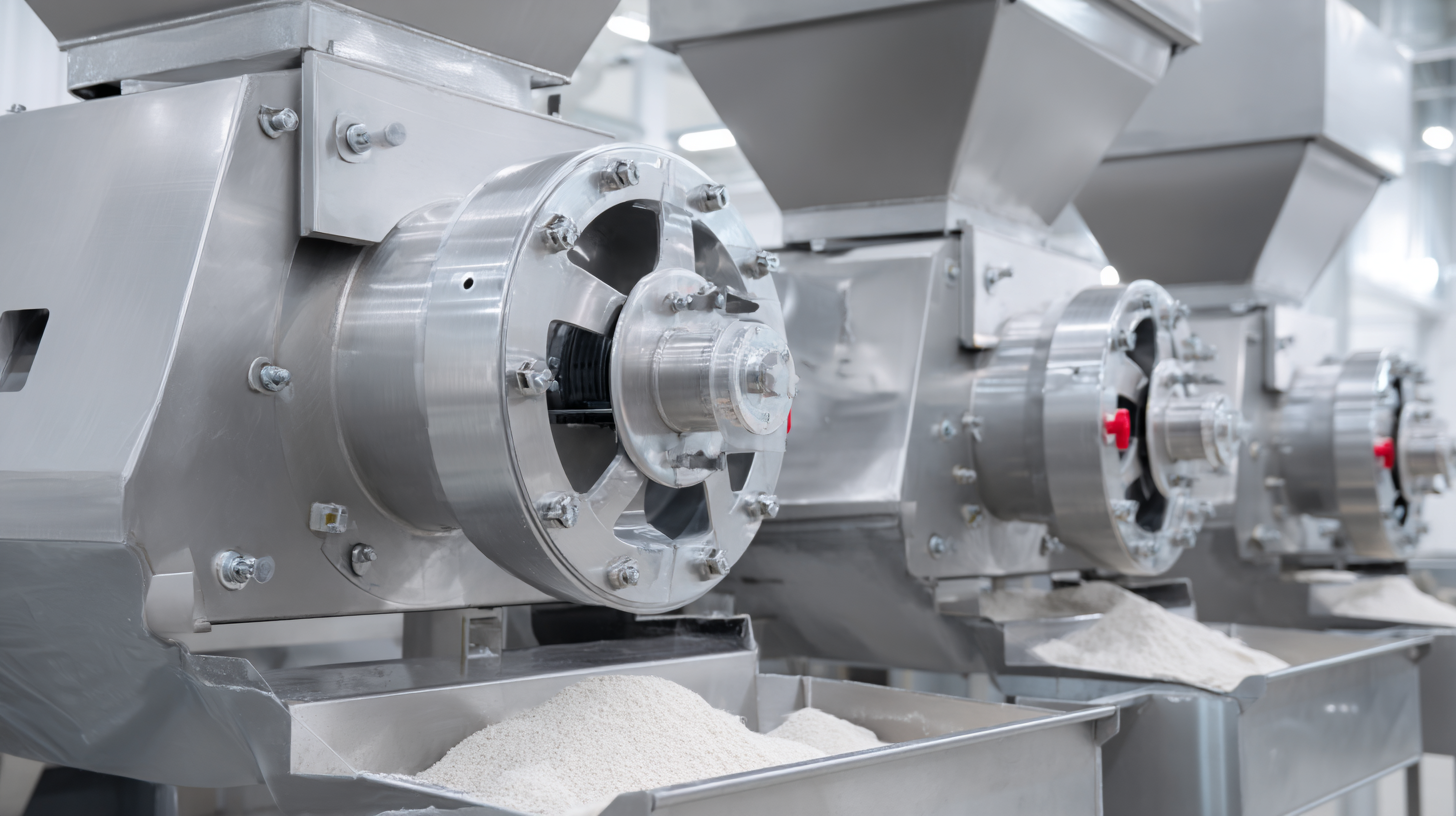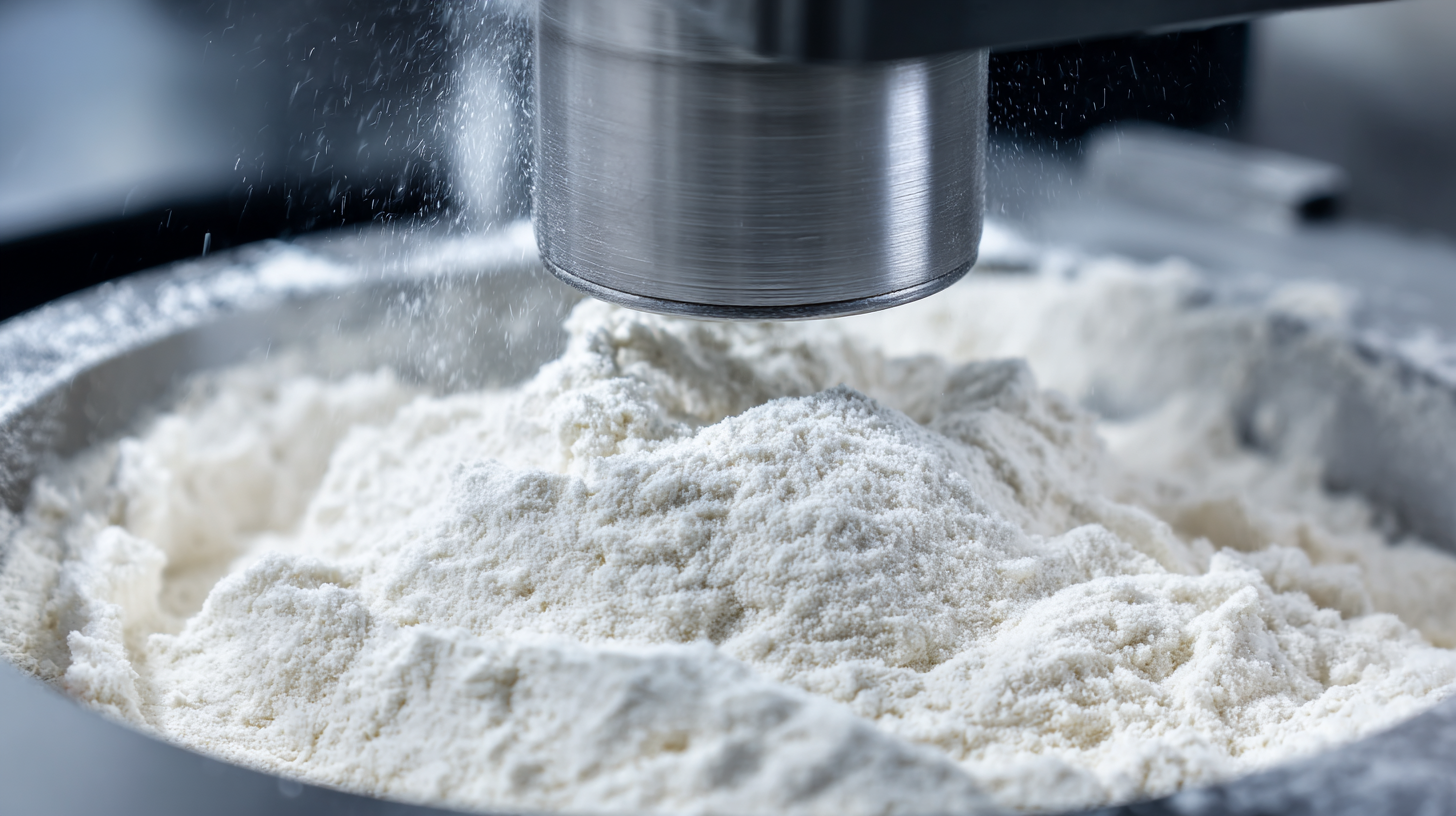
Blog
How the Best Powder Pulverizer Transforms Food Processing: Industry Case Studies and Insights
In the ever-evolving landscape of food processing, the integration of advanced machinery is pivotal for achieving efficiency, consistency, and quality. One such innovation is the Powder Pulverizer, a critical tool that allows processors to finely grind raw materials into desired particle sizes, which is essential for enhancing flavor profiles, texture, and shelf stability. According to the latest market research, the global food processing equipment market is projected to reach USD 100 billion by 2026, with pulverizing systems playing a significant role in driving this growth. By examining industry case studies, we can glean insights into how the best Powder Pulverizers optimize production lines, reduce operational costs, and improve product consistency, ultimately transforming food processing and meeting the demands of modern consumers. This blog will explore the technical specifications of these machines and provide practical guidance on their implementation in food manufacturing processes.

The Role of Advanced Powder Pulverizers in Elevating Food Quality and Safety Standards
In the modern food processing industry, the implementation of advanced powder pulverizers is pivotal in enhancing food quality and safety standards. According to a research report published by the International Journal of Food Science, improper milling and pulverizing techniques can lead to particle size inconsistencies, which directly affect the taste, texture, and safety of food products. Advanced pulverizers, designed with precision engineering, ensure uniform particle sizes that are critical for both sensory quality and ingredient stability. This uniformity not only enhances the organoleptic properties of food but also plays a significant role in extending shelf life and minimizing waste.
Moreover, the integration of advanced pulverizing technology has been linked to stringent adherence to food safety standards. A report from the Food Safety and Inspection Service indicated that 25% of food contamination cases arise from inadequate processing methods, highlighting the need for robust equipment that complies with regulations. Advanced powder pulverizers equipped with real-time monitoring systems help mitigate such risks by maintaining optimal processing conditions. This results in reduced contamination rates and increased compliance with safety standards, ultimately leading to improved consumer trust and market competitiveness.
Transformative Case Studies: How Industry Leaders Optimize Production Through Pulverization
In the ever-evolving landscape of food processing, industry leaders are increasingly turning to advanced pulverization techniques to enhance production efficiency and product quality. Case studies reveal that companies implementing high-performance powder pulverizers have not only streamlined their processes but also achieved significant cost savings. For instance, a leading snack manufacturer adopted a state-of-the-art pulverizer that allowed them to reduce ingredient preparation time by 40%, ultimately speeding up their entire production line. This transformation not only increased their output but also improved the consistency and flavor of their products.
Another notable example is a major spice producer that faced challenges with the uneven texture of their powders, impacting customer satisfaction. By integrating a high-precision pulverization system, they mastered the art of achieving uniform particle size, resulting in enhanced flavor release and a better end product. The company's focus on optimizing their production through innovative pulverization techniques not only improved their product but also positioned them as a quality leader in the market, allowing them to expand their distribution channels and attract new clientele. These insights illustrate how the strategic use of pulverization can revolutionize food processing, driving growth and excellence in the industry.

Analyzing Market Trends: The Rise of High-Efficiency Pulverizers by 2025
The food processing industry is on the brink of transformation, particularly with the rising demand for high-efficiency pulverizers. As we project into 2025, insights reveal that the Pulverizing System Market will soar from 4.07 billion USD in 2025 to an impressive 6.58 billion USD by 2034, signaling a robust CAGR. This growth underscores a significant shift towards advanced pulverization technology, which enhances efficiency and sustainability in food manufacturing.
Tips for businesses considering an upgrade to high-efficiency pulverizers include evaluating the scalability of the machines in relation to their production needs. It’s essential to choose a pulverizer that not only meets current demands but can also adapt to future growth. Additionally, integrating automation features can greatly enhance operational efficiency and reduce labor costs.
Another key factor is the energy consumption of new pulverizing technologies. Businesses should opt for equipment that optimizes energy use, thus reducing operational costs and minimizing environmental impact. By proactively addressing these considerations, companies can harness the full potential of the evolving pulverization landscape.

Key Performance Metrics: Evaluating Effectiveness of Powder Pulverizers in Food Processing
The effectiveness of powder pulverizers in food processing relies heavily on several key performance metrics that industries must consider to enhance efficiency and quality. According to a recent report by Freedonia Group, the global market for food processing machinery is expected to reach $32 billion by 2026, with powder pulverizers playing a critical role in this growth by improving ingredient uniformity and reducing processing time. Performance metrics such as particle size distribution, throughput rates, and energy consumption are paramount for evaluating the efficiency of pulverizers in food production.
Particle size distribution is a crucial metric as it directly influences the solubility and flavor release of food products. For example, a study published in the Journal of Food Engineering found that achieving a particle size under 100 microns can significantly enhance the dissolution rate of powdered ingredients, leading to improved product consistency. Throughput rates are also essential; efficient pulverizers can dramatically increase production capacity, with top models achieving up to 90% operational efficiency, thus reducing processing time while maintaining product quality. Furthermore, monitoring energy consumption helps processors identify cost-saving opportunities, as advanced technologies now offer energy reductions of up to 30% compared to conventional pulverizers.
Performance Metrics of Powder Pulverizers in Food Processing
This bar chart demonstrates key performance metrics for powder pulverizers used in food processing, illustrating their efficiency, particle size reduction capability, processing speed, and energy consumption. Each parameter reflects critical aspects of pulverizer effectiveness in the industry.
Expert Checklist: Essential Features for Selecting the Best Powder Pulverizer in 2025
Selecting the best powder pulverizer in 2025 requires a keen understanding of essential features that enhance food processing efficiency. Advances in technology have revolutionized the industry, making it crucial to identify equipment that aligns with modern standards. When assessing a pulverizer, consider its capacity, versatility in handling various ingredients, and overall energy efficiency. Additionally, look for units equipped with noise-reduction technology, as quiet operation is increasingly desirable in many food processing environments.
Tip 1: Evaluate the pulverizer's material construction. High-quality materials not only ensure durability but also maintain the integrity of the food products being processed. Stainless steel is often preferred for its resistance to corrosion and ease of cleaning.
Tip 2: Pay attention to the ease of maintenance and sanitation. A pulverizer that permits quick disassembly for cleaning can save valuable time and ensure adherence to health standards in food processing.
Incorporating these tips will help you navigate the selection process and choose a pulverizer that not only meets your operational needs but also elevates your food processing capabilities.
How the Best Powder Pulverizer Transforms Food Processing: Industry Case Studies and Insights
| Case Study | Industry | Before Implementation | After Implementation | Key Features Utilized | Insights |
|---|---|---|---|---|---|
| Case Study 1 | Beverage Industry | Inefficient grinding, uneven texture | Homogeneous powder, increased production speed | Fine grinding capability, adjustable settings | Improved product quality led to higher sales |
| Case Study 2 | Spice Processing | High wastage, inconsistent grind sizes | Minimal waste, consistent fine grind | Dust extraction system, user-friendly controls | Cost savings and enhanced product consistency |
| Case Study 3 | Baking Industry | Long processing times, poor blending | Reduction in processing time, better blending | High-speed pulverizing, integrated mixing | Higher efficiency and improved product output |



